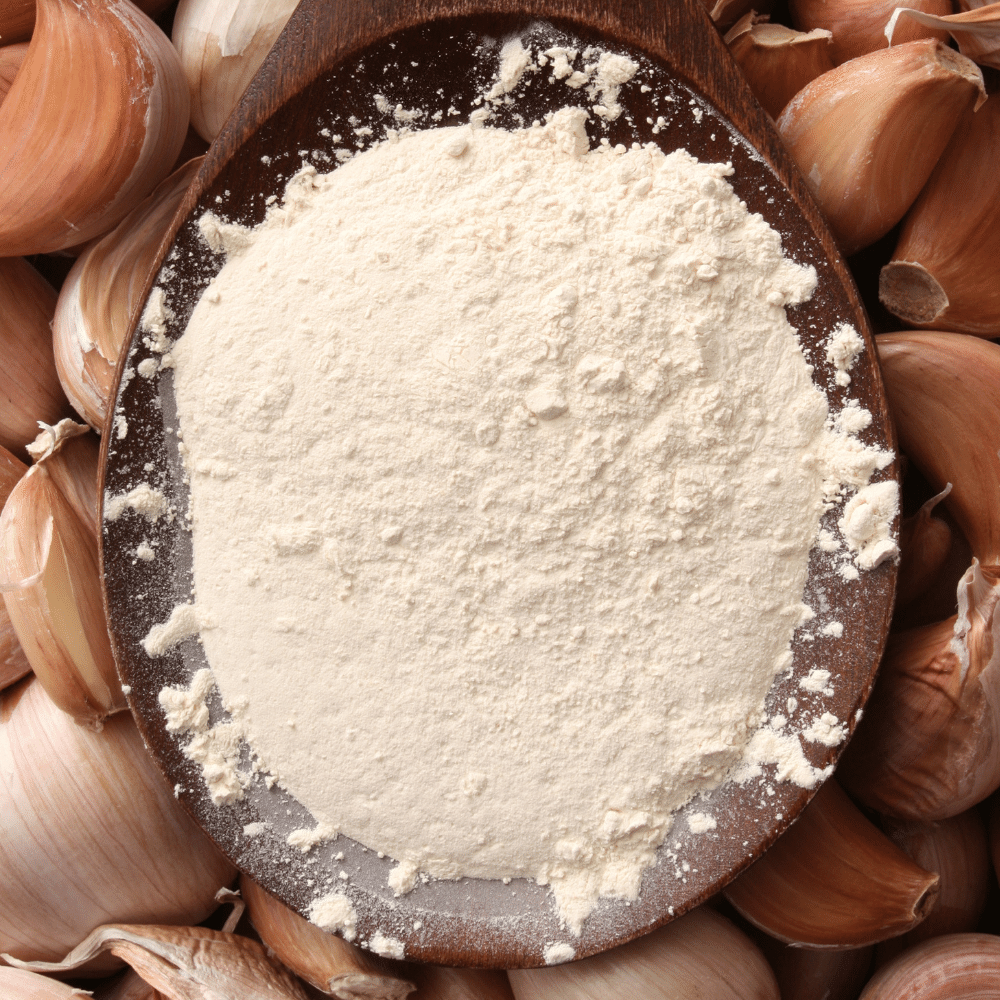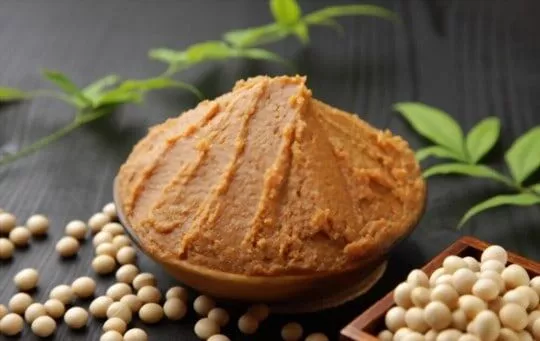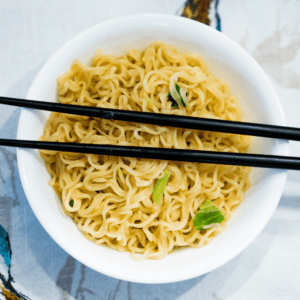Ramen is a delicious and versatile dish that can be enjoyed in many ways.
Whether you’re making it from scratch or using a store-bought packet, the possibilities are endless!
The key to great ramen lies in its seasoning.
The right herbs and spices can really transform your bowl of noodles into something special.
But with so many options out there, which ones should you choose?
In this article, I’ll share my top 10 picks for the best herbs and spices for ramen.
From classic ingredients like ginger and garlic to more exotic flavors like star anise and Sichuan peppercorns, I’ve got all the knowledge you need to make your ramen unforgettable!
Read Also: What Vegetables Go in Ramen? (20 Best Veggies for Ramen)
What is Ramen?

Ramen is a Japanese noodle dish that has become popular around the world.
It consists of wheat noodles served in a broth, usually flavored with soy sauce or miso, and topped with various ingredients such as sliced pork, seaweed, green onions, boiled eggs, and fish cakes.
Ramen can also be served cold or hot depending on the season.
The origins of ramen are unclear but it is believed to have been introduced to Japan by Chinese immigrants during the Meiji period (1868-1912).
Since then it has become an integral part of Japanese cuisine and culture.
There are many regional variations of ramen throughout Japan including Sapporo-style miso ramen from Hokkaido in the north and tonkotsu (pork bone) ramen from Kyushu in the south.
In recent years there has been an explosion of creative new styles of ramen popping up all over Japan as well as abroad.
These include vegan versions made with vegetable broths and toppings like mushrooms and tofu; fusion dishes combining traditional flavors with international influences; tsukemen (dipping noodles); mazesoba (dry noodles); abura soba (oil noodles); kaedama (refillable noodles); shio ramen (salt-based broth); shoyu ramen (soy sauce based broth), etc.
10 Best Herbs and Spices for Ramen
Ramen is a delicious meal, but it can become even more flavorful with the right herbs and spices.
Here are ten herbs and spices that make for excellent ramen seasonings:
1. Ginger

Ginger is a root that has been used for centuries in cooking and medicine.
It is native to Southeast Asia, but it can now be found all over the world.
The ginger root looks like a knobby brown rhizome with thin skin and yellow-green flesh.
It has a pungent aroma and spicy flavor that adds depth to many dishes.
- When adding ginger to ramen, you should start with about 1 teaspoon of freshly grated or minced ginger per serving of ramen. You can adjust the amount depending on your taste preferences; some people prefer more or less ginger than others. If you are using dried ground ginger, use half as much as you would fresh since it is more concentrated in flavor.
- Common Uses: Ginger is commonly used in Asian cuisine such as stir-fries, curries, soups, salads, and marinades. It’s also popularly used in baking recipes such as cookies and cakes for its unique flavor profile. In addition to being added to savory dishes, it can also be enjoyed on its own by making tea from freshly grated or powdered ginger root mixed with hot water and honey or lemon juice for sweetness if desired.
2. Garlic Powder

Garlic powder is a seasoning made from dehydrated garlic that has been ground into a fine powder.
It is used to add flavor and aroma to dishes, and it can be used as an alternative to fresh garlic in recipes.
- How Much To Add: When using garlic powder in place of fresh garlic, use 1/8 teaspoon for every clove of garlic called for in the recipe. You can also adjust the amount depending on your taste preferences; start with less and add more if needed.
- Common Uses: Garlic powder is most commonly used as a seasoning for savory dishes such as soups, stews, sauces, marinades, dressings, rubs, and stir-fries. It’s especially popular when making ramen noodles because it adds flavor without having to chop or mince any fresh ingredients. Additionally, you can use it to season roasted vegetables or sprinkle it over popcorn for a flavorful snack.
3. Red Pepper Flakes

Red pepper flakes are a common ingredient in many cuisines, and they are made from dried and crushed red chili peppers.
They add a spicy kick to dishes, and the heat level can vary depending on the type of pepper used.
- How Much To Add: When adding red pepper flakes to ramen, start with a small amount—about 1/4 teaspoon per serving should be enough for most people. You can always add more if you want it spicier. It’s important to note that the flavor will intensify as the dish cooks, so don’t overdo it!
- Common Uses: Red pepper flakes are commonly used in Italian cuisine such as pizza and pasta dishes, but they also have many other uses. They can be added to soups or stews for an extra kick of heat; sprinkled over roasted vegetables; mixed into dips or spreads; or even added to scrambled eggs for breakfast.
4. Sesame Oil

Sesame oil is a type of vegetable oil derived from sesame seeds.
It has a nutty, slightly sweet flavor and is used in many Asian cuisines.
It’s also known for its health benefits, as it contains high levels of antioxidants and essential fatty acids.
- When making ramen, you can add sesame oil to the broth or use it as a finishing oil when serving the dish. A little goes a long way; start with just 1 teaspoon per bowl of ramen and adjust according to taste. The sesame oil will add an extra layer of flavor that will really bring out the other ingredients in your dish.
- Common Uses: In addition to being used in ramen, sesame oil is often used as a finishing touch on salads, stir-fries, noodles dishes, soups, and marinades. It’s also great for adding flavor to sauces like teriyaki or hoisin sauce. You can even use it as an ingredient in baking recipes such as muffins or cakes!
5. Onion Powder

Onion powder is a seasoning made from ground, dehydrated onions.
It has a strong onion flavor and can be used as an alternative to fresh onions in many recipes.
It’s often used in soups, stews, sauces, dressings, and marinades.
- How Much To Add: When adding onion powder to ramen noodles or any other dish, start with 1/4 teaspoon per serving and adjust the amount according to your taste preferences. Keep in mind that the flavor of onion powder will become more intense as it cooks so you may want to add less than you think you need at first.
- Common Uses: Onion powder is also commonly used in dry rubs for meats and vegetables; it adds a subtle sweetness that pairs well with savory flavors like garlic or herbs. You can also use it as a topping on popcorn or baked potatoes for added flavor without having to chop up fresh onions! Additionally, onion powder is great for making salad dressings or dips; just mix it with some olive oil and vinegar for an easy vinaigrette!
6. Dried Seaweed
Dried seaweed is a type of edible algae that has been dried and can be used as an ingredient in many dishes.
It is most commonly found in Asian cuisine, but it can also be found in other cuisines around the world.
Seaweed is high in vitamins, minerals, and antioxidants and is considered to be one of the healthiest foods on the planet.
- When making ramen, adding dried seaweed will give your dish a unique flavor and texture. The amount you add depends on how much flavor you want to impart; generally speaking, about 1 teaspoon per serving should do the trick. You can use any type of seaweed for this purpose; some popular varieties include wakame, nori, kombu, hijiki, arame, dulse flakes or powder.
- Common Uses: Dried seaweed has many uses beyond just ramen! It can be added to salads or soups for extra nutrition and flavor; it’s great as a topping for rice bowls or stir-fries; it makes a great snack when seasoned with sesame oil or soy sauce; and it’s even used to make sushi rolls!
7. White Pepper

White pepper is a spice made from the dried, ripe berries of the Piper nigrum plant.
The berries are soaked in water for several days to remove their outer layer, which gives them their white color.
This process also removes some of the heat and pungency associated with black pepper.
- How Much To Add: When using white pepper in cooking, it’s important to remember that a little goes a long way. Start by adding just a pinch or two at first and then adjust as needed. It can be used in both savory and sweet dishes but should be added sparingly so as not to overpower other flavors.
- Common Uses: White pepper is commonly used in light-colored sauces like béchamel or hollandaise where you don’t want the dark specks of black pepper showing up. It’s also often used in Chinese cuisine, particularly when making soups and stir-fries. In addition to ramen, it can also be used to season fish, poultry, vegetables, salads, dressings, and even desserts like custards or ice cream!
8. Soy Sauce

Soy sauce is a fermented condiment made from soybeans, wheat, salt, and water.
It has been used in Asian cooking for centuries and is now widely available around the world.
The flavor of soy sauce can range from light to dark depending on the brand and type of soy sauce you use.
- How Much To Add: When adding soy sauce to ramen, it’s important to not overdo it as too much can overpower the other flavors in the dish. Start with just a teaspoon or two per serving and adjust according to your taste preferences. You can always add more if needed but be careful not to add too much at once as it will make your ramen overly salty.
- Common Uses: Soy sauce is an incredibly versatile ingredient that can be used in many different dishes beyond ramen. It’s commonly used as a marinade for meats or vegetables before grilling or roasting them; it also adds depth of flavor when added to stir-fries or soups. Additionally, soy sauce makes a great dipping sauce for dumplings or spring rolls—just mix some with rice vinegar and sesame oil for an easy yet flavorful dip!
9. Miso Paste

Miso paste is a traditional Japanese condiment made from fermented soybeans, salt, and koji (a type of fungus).
It has a thick texture and comes in various shades of brown.
The flavor can range from sweet to salty depending on the variety.
- How Much To Add: When adding miso paste to ramen, it’s important to start with small amounts and adjust as needed. A teaspoon or two should be enough for one bowl of ramen. You can always add more if you want a stronger flavor.
- Common Uses: Miso paste is most commonly used in soup but it also makes an excellent marinade for fish or vegetables, adds depth to sauces and dressings, and can be used as a spread on sandwiches or toast. It’s also great for making glazes for grilled meats or vegetables.
10. Curry Powder

Curry powder is a blend of spices that originated in India and is now used around the world.
It typically includes turmeric, coriander, cumin, fenugreek, ginger, cardamom, cinnamon, cloves and nutmeg.
The exact ingredients vary depending on the region or brand of curry powder you buy.
- How Much To Add: When adding curry powder to ramen noodles or any other dish for that matter, it’s important to remember that a little goes a long way. Start with 1/4 teaspoon per serving and adjust as desired. You can always add more but it’s hard to take away if you’ve added too much!
- Common Uses: Curry powder is most commonly used in Indian dishes like curries and tandoori chicken but it can also be used in many other cuisines such as Thai food or even Mexican food. It adds an earthy flavor with hints of sweetness from the cinnamon and nutmeg. In addition to ramen noodles, try adding some curry powder to soups or stews for an extra layer of flavor.
Conclusion
In conclusion, if you’re looking to add some flavor to your ramen, there are a variety of herbs and spices that can be used to enhance the taste.
Ginger, garlic, red pepper flakes, sesame oil, onion powder, dried seaweed, white pepper, soy sauce, miso paste, and curry powder are some of the best herbs and spices for ramen. All of these ingredients can be used to season your ramen and create a delicious, flavorful dish.
By combining these herbs and spices, you can create a unique and delicious ramen that is sure to satisfy your taste buds.

10 Best Herbs and Spices for Ramen
Ingredients
- Ginger
- Garlic Powder
- Red Pepper Flakes
- Sesame Oil
- Onion Powder
- Dried Seaweed
- White Pepper
- Soy Sauce
- Miso Paste
- Curry Powder
Instructions
- Pick your favorite herbs and spices from this list to add to your ramen recipe.
- Prepare the rest of your meal, and enjoy!
Jenny has always been passionate about cooking, and she uses her platform to share her joy of food with others. Her recipes are easy to follow, and she loves giving tips and tricks to help others create their own unique culinary creations.

